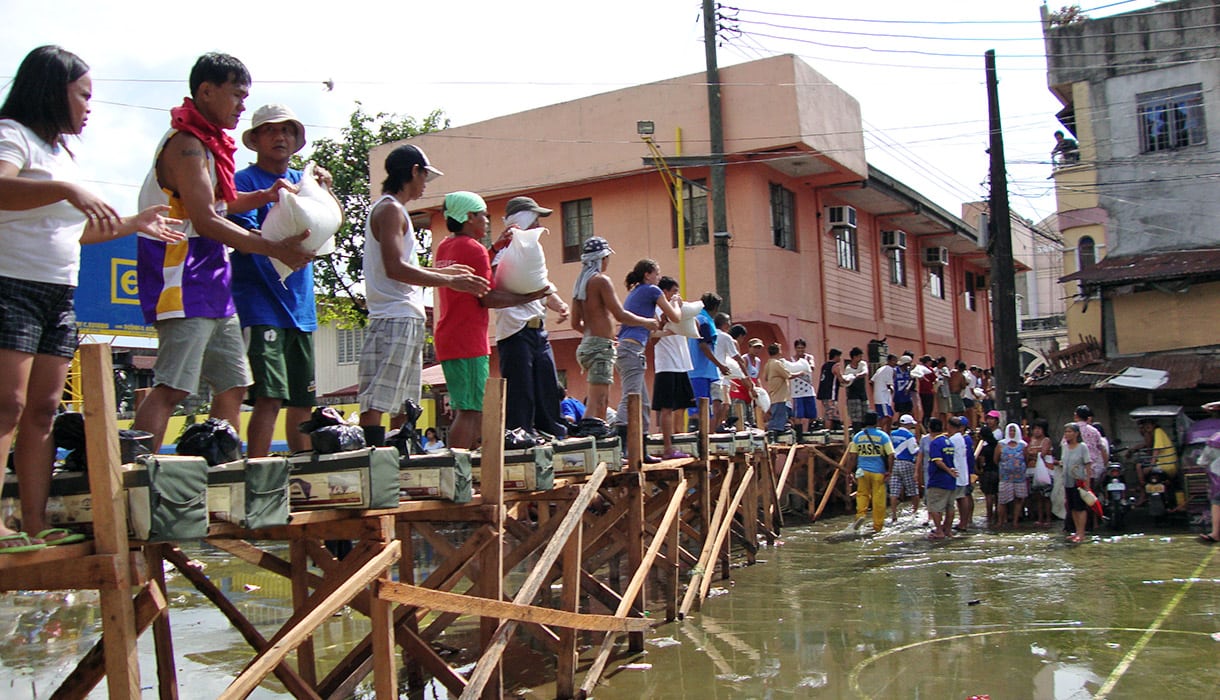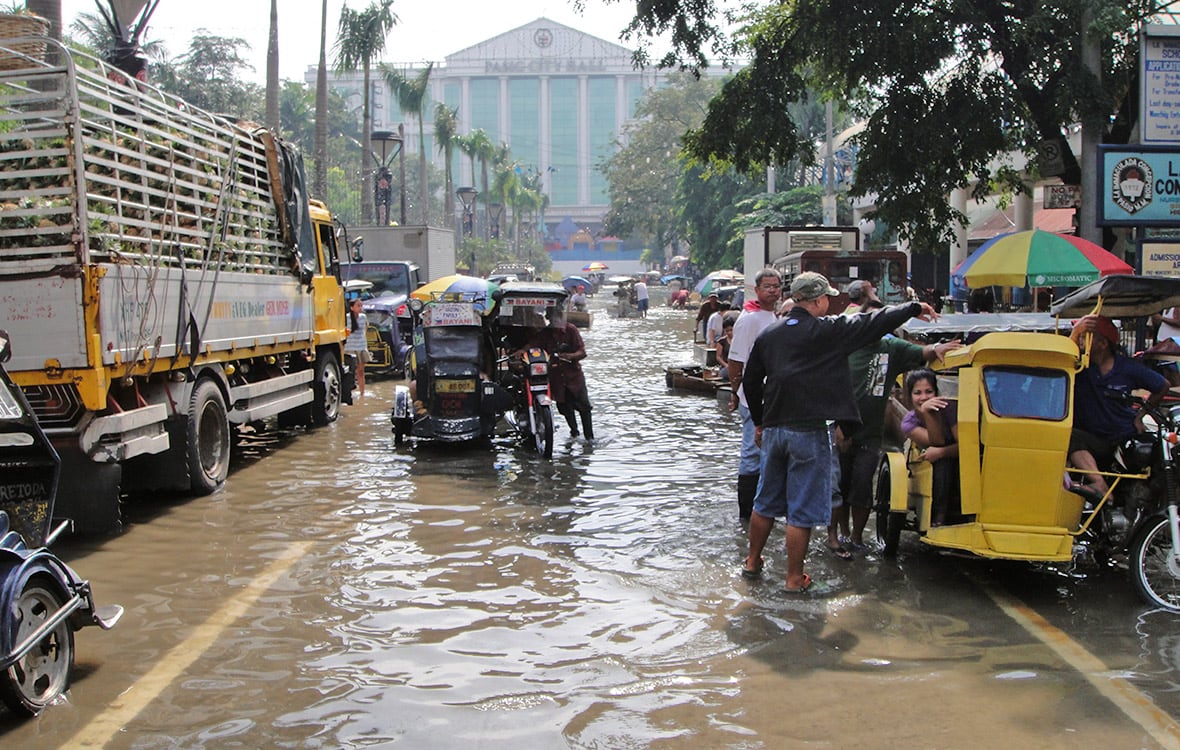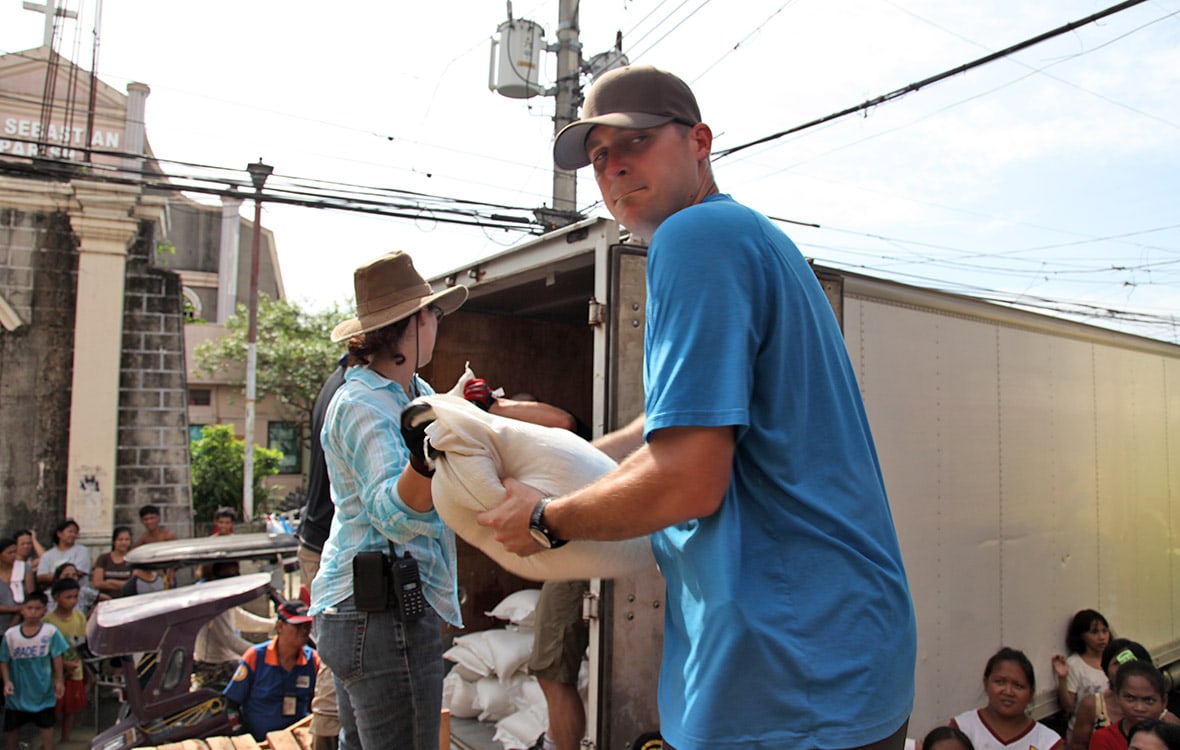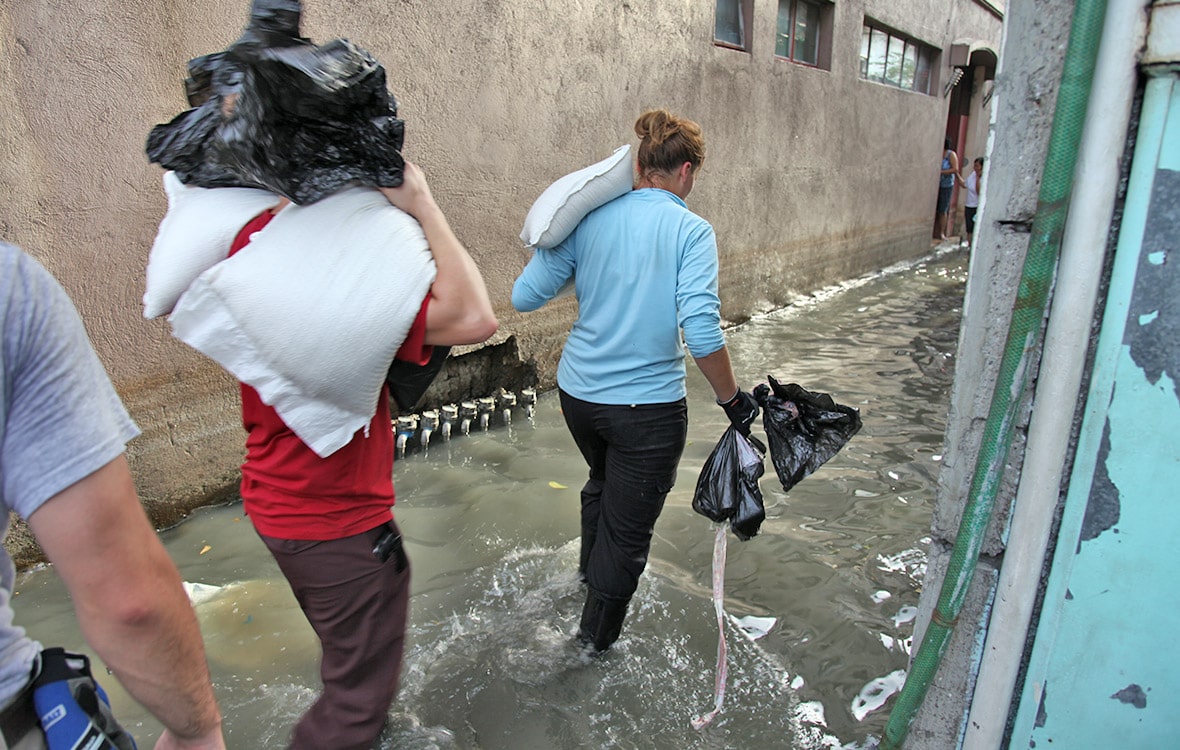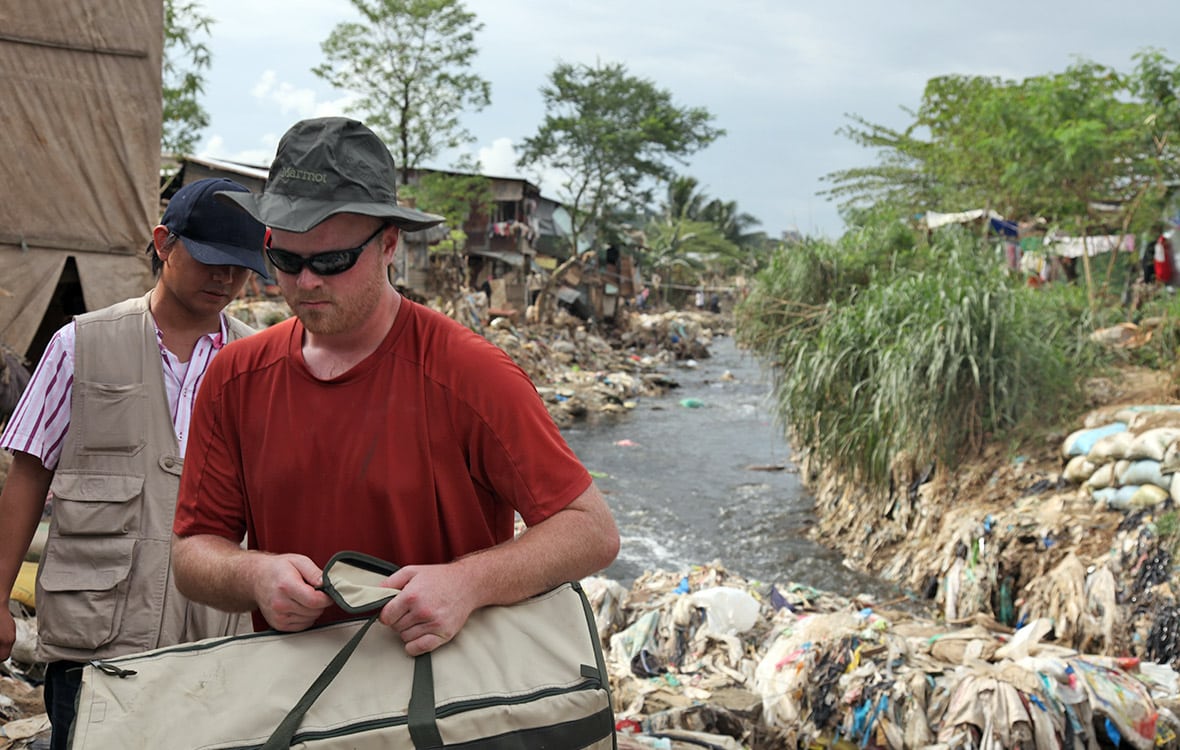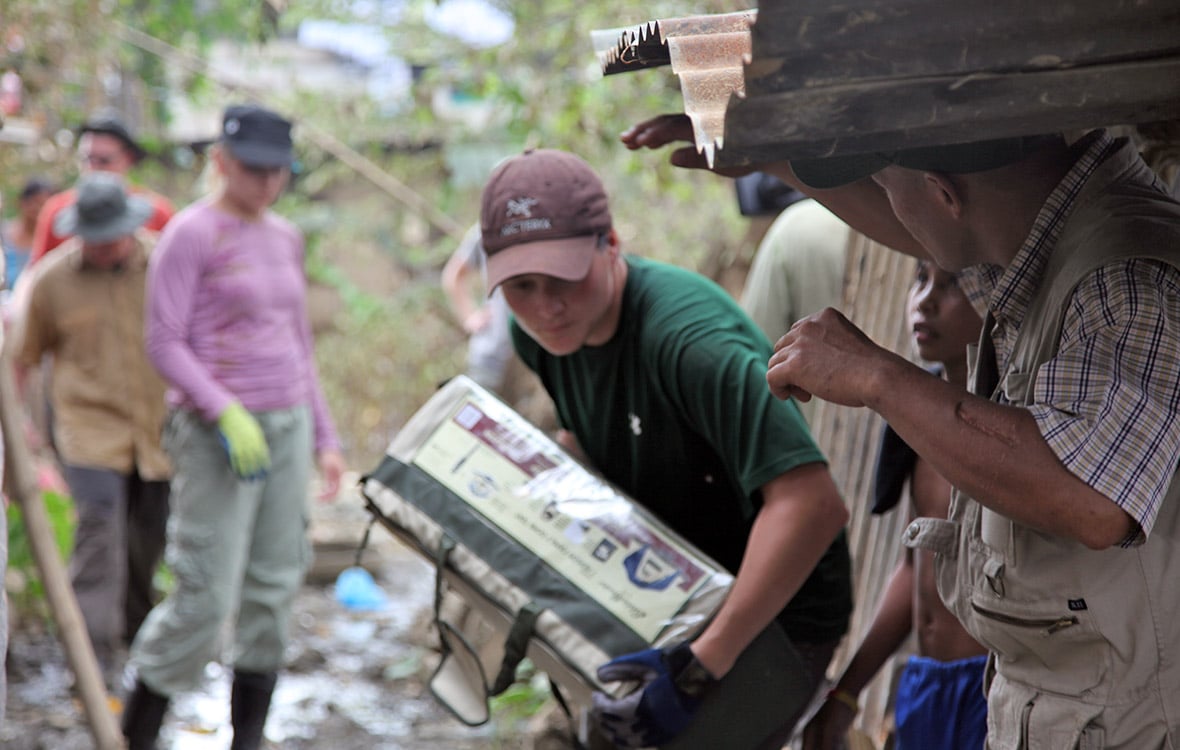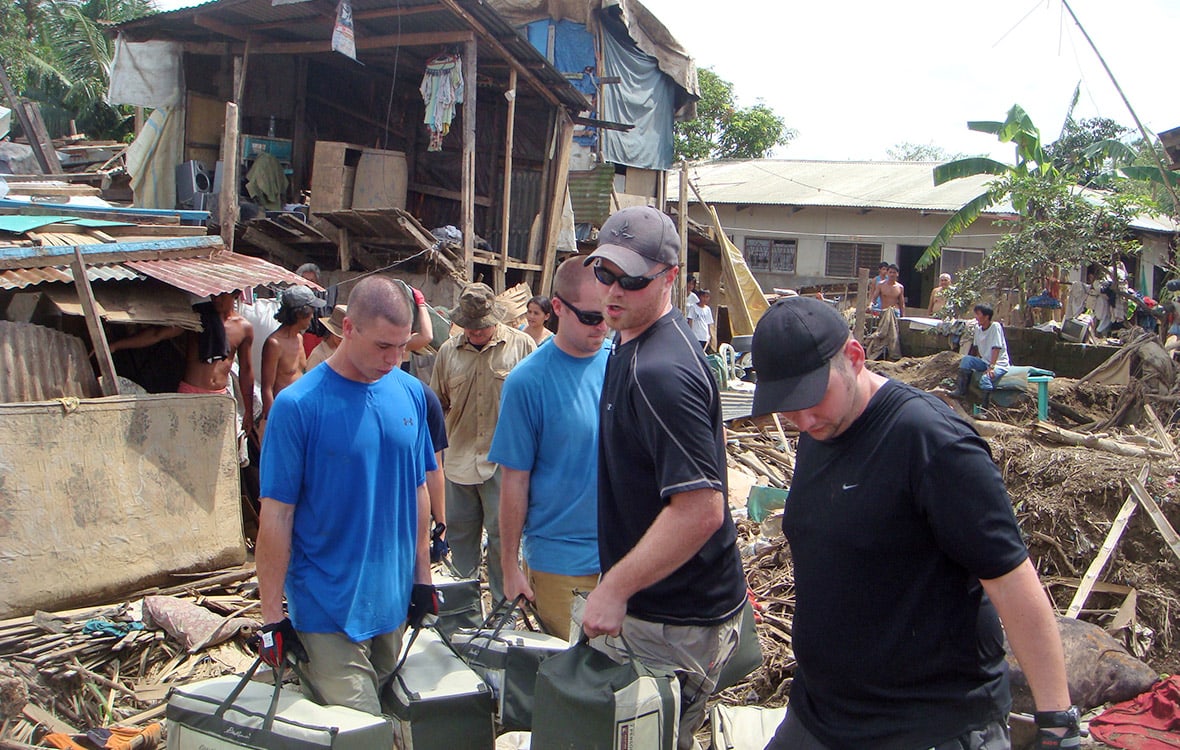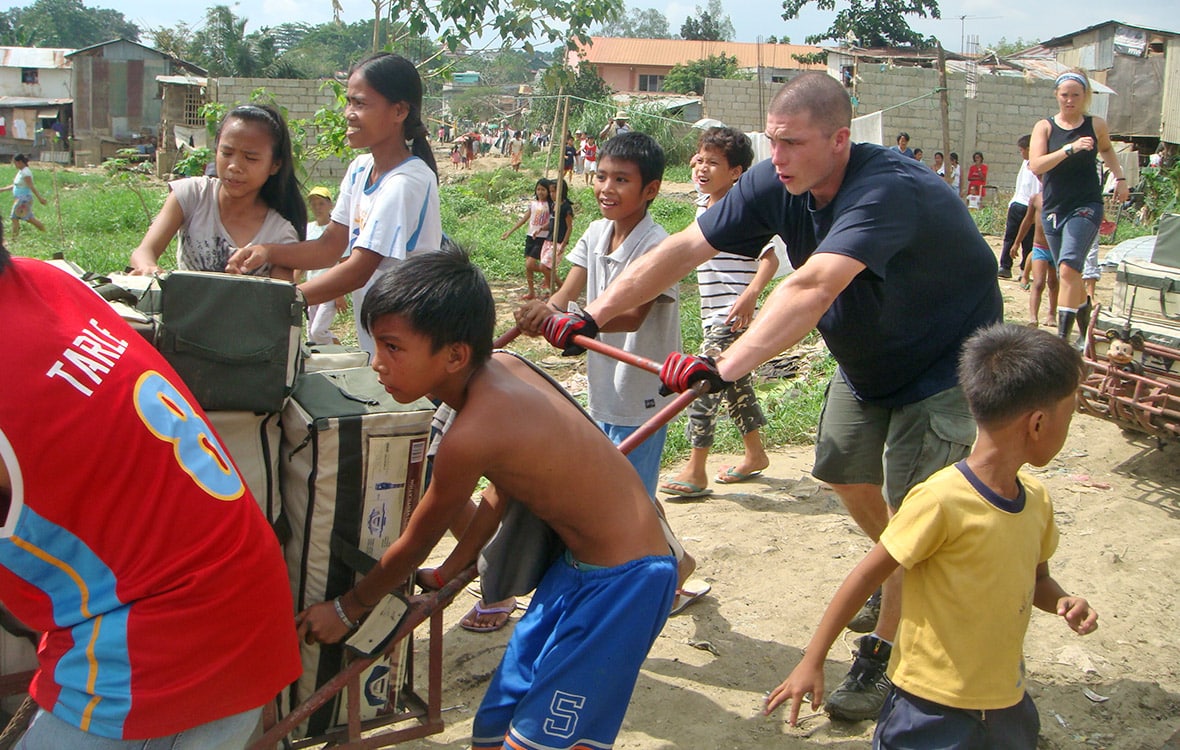“Asia’s Week from Hell.” That’s what the world named the week of September 27 to October 3 in 2009. In the span of a couple days, 3 countries experienced devastating natural disasters. In Samoa, a magnitude 8.1 earthquake and subsequent tsunami devastated a swath of Pacific Islands. In Sumatra, a magnitude 7.6 earthquake leveled thousands of houses and caused many deaths. To top it off, Typhoon Ketsana, known locally as Tropical Storm Ondoy, became the second major typhoon to hit the Philippines in the same season, leading to over 1,500 combined fatalities, some $7 billion in destruction, and widespread flooding.
Considering the massive amount of poverty and millions in need, Richard Hotes and the Hotes Foundation team decided to focus their disaster relief efforts, to go and help the poorest of the poor in the Philippines.
Once on the ground, Hotes Foundation volunteers waded thru feet of water, mud, and debris, risking leptospirosis to deliver tents and food items, which included 25 lbs bags of rice, cans of tuna, and bottled water to over 50,000 of the poorest of the poor, most impacted populations in the Philippines.
NGOs, the Philippine government, and international organizations received more than $100-million dollars in aid to help the people of the Philippines as a result of Typhoon Morakot and Typhoon Ketsana. As is always the case, virtually none of the poorest of the poor received help of any kind in any of the places the Hotes Foundation hand delivered supplies, including the barangay of Payatas.
“[Payatas] is a disaster without a disaster having to happen” stated Richard Hotes.
Over several decades of experience performing disaster relief missions, to the poorest areas of the world, Richard Hotes described Payatas, a barangay in Quezon City, Metro Manila, as being “one of the worst I’ve ever seen - if not the worst.” An impoverished and desperate population meagerly survives on scavenging garbage from one of the largest dumpsites in the world. Not recognized by the Philippine government, and considered “squatters” by nearby towns, the families living in Payatas survive by selling collected garbage items to residents of the area, risking their lives from garbage landslides, respiratory illness, disease, and spontaneous methane fires. Shanty homes made of garbage and tin sheets are densely packed alongside waste water filled creeks lined with garbage. To say the living conditions are unsanitary is a tragic understatement.
At the behest of local authorities, Richard Hotes and the team of Hotes Foundtion volunteers were denied entry into Payatas in an attempt to redirect aid based on its own interests, not to those in the greatest need. The directing of aid to more wealthy communities, or areas of personal interest either by local or government authorities, or those dictated by NGO’s is very common following a disaster and within the world aid system. With this knowledge, it is very telling when an official directs you to a particular area, if you go the opposite way, nearly every time you will find the poorest of the poor and those in the greatest need.
Undeterred and working with a local priest who asked his name be kept anonymous, Richard Hotes and volunteers were shown an alternative and less-known way to enter Payatas, circumventing the authorities’ orders to reach the families in need.
The Hotes Foundation’s efforts following Typhoon Ketsana serve as a stark reminder why more volunteers on the ground, giving directly to the poorest of the poor, is needed to end poverty.
Read more about the Hotes Foundation’s response to Typhoon Ketsana.

